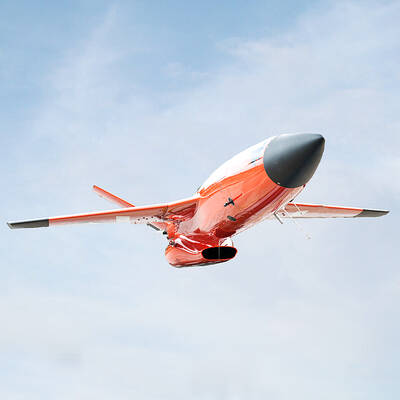The US House of Representatives on Friday passed the US military budget for next year, with an amendment that stipulates that if the US Department of Defense invites Beijing to participate in the Rim of the Pacific Exercise (RIMPAC), a similar invitation must also be extended to Taiwan.
The amendment was proposed by Mark Walker.
The amendment said that the US secretary of defense “shall invite the military forces of Taiwan to participate in any maritime exercise known as the Rim of the Pacific Exercise” if the secretary has invited the military forces of the People’s Republic of China to participate.
The amendment specified that “this section takes effect on the date of the enactment of this Act.”
The US National Defense Authorization Act, which passed 269 to 151, is to go to US President Barack Obama only after the US Senate passes the same or a similar bill.
China’s navy took part in RIMPAC — the largest international maritime warfare exercise in the world — in the summer of last year.
After being informed of the news, Ministry of National Defense spokesman Major General Major General David Lo (羅紹和) said in Taipei that the Republic of China (ROC) military welcomed the development.
The ministry intends to play a more active role in regional security and shoulder more responsibility for peace and stability in the Asia-Pacific region, and is keen to be an observer at international organizations focused on security and cooperation while taking part in joint exercises, Lo said.
“We have expressed our willingness to take part in RIMPAC,” Deputy Minister of National Defense Admiral Chen Yung-kang (陳永康) said on April 20 in Taipei, local media reported last month.
Talks are under way between the Republic of China (ROC) Navy and the US Navy on the use of the Code for Unplanned Encounters at Sea (CUES), Chen told a committee meeting in the legislature.
After establishing a CUES protocol based on international radio signal communication procedures, the ROC Navy “could have the opportunity to take the next step of participating in joint multinational naval exercises,” Chen said.
Japan, South Korea, the Philippines and China reached agreement on the CUES with the US before being allowed to participate in joint exercises and expand cooperation between their armed forces and that of the US, Chen added.
Obama has threatened to veto the legislation, which US Secretary of Defense Ashton Carter last week described as a road to nowhere, the New York Times reported on Friday.
Senator John McCain, chairman of the US Senate Armed Services Committee, said he hoped the two chambers would work together to produce a bill the president will sign, according to the Times.

CROSS-STRAIT COLLABORATION: The new KMT chairwoman expressed interest in meeting the Chinese president from the start, but she’ll have to pay to get in Beijing allegedly agreed to let Chinese Nationalist Party (KMT) Chairwoman Cheng Li-wun (鄭麗文) meet with Chinese President Xi Jinping (習近平) around the Lunar New Year holiday next year on three conditions, including that the KMT block Taiwan’s arms purchases, a source said yesterday. Cheng has expressed interest in meeting Xi since she won the KMT’s chairmanship election in October. A source, speaking on condition of anonymity, said a consensus on a meeting was allegedly reached after two KMT vice chairmen visited China’s Taiwan Affairs Office Director Song Tao (宋濤) in China last month. Beijing allegedly gave the KMT three conditions it had to

STAYING ALERT: China this week deployed its largest maritime show of force to date in the region, prompting concern in Taipei and Tokyo, which Beijing has brushed off Deterring conflict over Taiwan is a priority, the White House said in its National Security Strategy published yesterday, which also called on Japan and South Korea to increase their defense spending to help protect the first island chain. Taiwan is strategically positioned between Northeast and Southeast Asia, and provides direct access to the second island chain, with one-third of global shipping passing through the South China Sea, the report said. Given the implications for the US economy, along with Taiwan’s dominance in semiconductors, “deterring a conflict over Taiwan, ideally by preserving military overmatch, is a priority,” it said. However, the strategy also reiterated

‘BALANCE OF POWER’: Hegseth said that the US did not want to ‘strangle’ China, but to ensure that none of Washington’s allies would be vulnerable to military aggression Washington has no intention of changing the “status quo” in the Taiwan Strait, US Secretary of Defense Pete Hegseth said on Saturday, adding that one of the US military’s main priorities is to deter China “through strength, not through confrontation.” Speaking at the annual Reagan National Defense Forum in Simi Valley, California, Hegseth outlined the US Department of Defense’s priorities under US President Donald Trump. “First, defending the US homeland and our hemisphere. Second, deterring China through strength, not confrontation. Third, increased burden sharing for us, allies and partners. And fourth, supercharging the US defense industrial base,” he said. US-China relations under

The Chien Feng IV (勁蜂, Mighty Hornet) loitering munition is on track to enter flight tests next month in connection with potential adoption by Taiwanese and US armed forces, a government source said yesterday. The kamikaze drone, which boasts a range of 1,000km, debuted at the Taipei Aerospace and Defense Technology Exhibition in September, the official said on condition of anonymity. The Chungshan Institute of Science and Technology and US-based Kratos Defense jointly developed the platform by leveraging the engine and airframe of the latter’s MQM-178 Firejet target drone, they said. The uncrewed aerial vehicle is designed to utilize an artificial intelligence computer